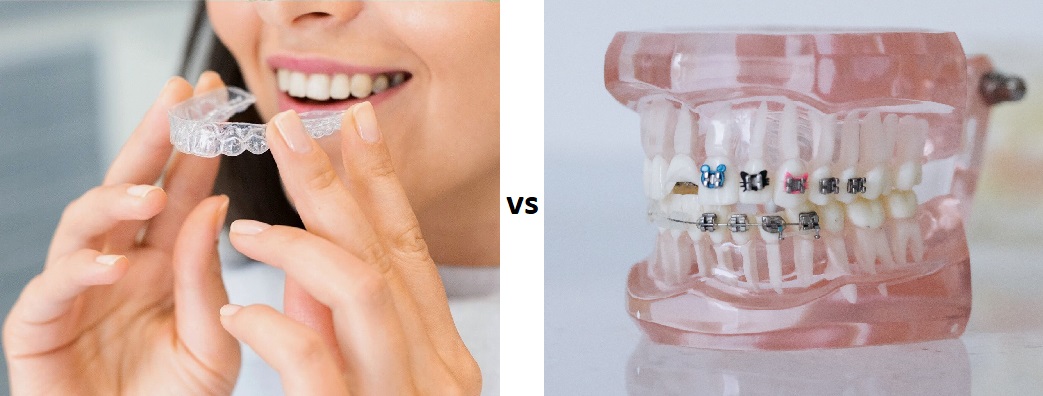What Is The Difference Between Invisalign And Braces?
Having the perfect smile is something everyone tries to achieve. A straight, aligned, and perfectly-shaped teeth are key factors to having a perfect smile. Having great teeth definitely helps people to be more confident with themselves. However, this isn’t really the case for everyone. There are people who aren’t blessed with perfect teeth, but there is always a solution for that. The two most popular options for straightening teeth are braces and invisalign. Both solutions have advantages and disadvantages, and either one can be picked based on personal preference.
96% of people believe that a person’s smile is a big factor to one’s overall appearance. For both teens and adults, braces and Invisalign work well to straighten your teeth and improve your smile. Both procedures realign your teeth and make sure that they function properly. However, each treatment has its advantages and disadvantages. Let’s tackle it a little more thoroughly.
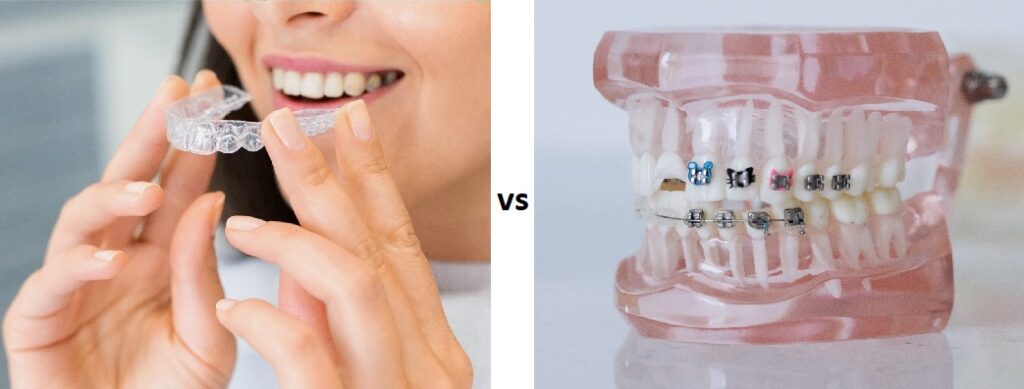
Similarities of Invisalign and Braces
There are a lot of similarities between braces and Invisalign that people don’t really realize, even though they look and feel very different. These two must be worn all day, with the exception of Invisalign being needed to remove before you eat. Both of these require the time and commitment to properly clean them, maintaining a good oral hygiene, and even following instructions on how to wear them.
Both braces and Invisalign are excellent and effective treatments for overbites, underbites, crooked teeth, and misaligned jaws. The average length of treatment for Invisalign and braces is similar at around 16 months.
Differences of Invisalign and Braces
With Invisalign, teeth are repositioned using a series of transparent, custom aligning trays that are switched out every week. They are molded medical-grade plastic mouthpieces that are personally designed for you to apply pressure to the teeth and move them into the correct position. Although braces may be a superior alternative for treating some severe orthodontic problems, Invisalign is undoubtedly the most convenient.
Pros of Invisalign:
Cons OF INVISALIGN:
Pros of Braces:
Cons of Braces:
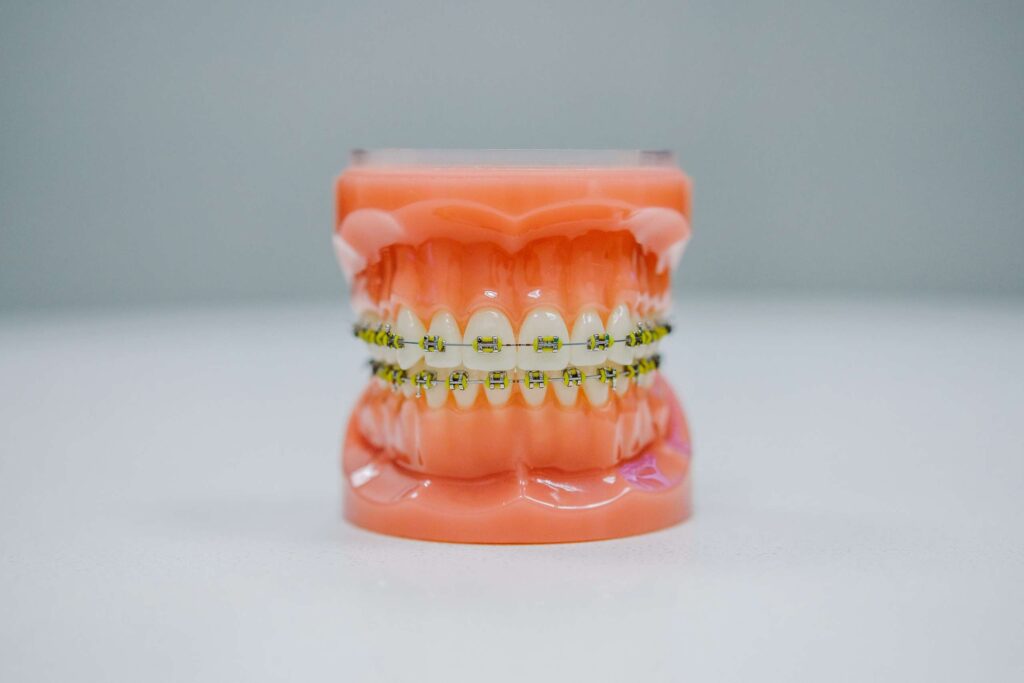
Appearance
Braces and Invisalign differ most in how they look, and Invisalign will always come out on top in this comparison. While traditional metal braces are more obvious, Invisalign is practically unnoticeable.
The clear plastic Invisalign trays are practically undetectable from a distance since there are no wires, brackets, or elastic that can be seen with the naked eye. Because Invisalign is transparent, most children and adults prefer its appearance. Invisalign is the better option if you prefer a discrete approach to teeth straightening.
On the other hand, braces are made of metal and attached to every tooth before being wired together. They are more noticeable than Invisalign, but require less removal. Your braces should ideally be taken off only when your treatment is finished and your teeth have spent a few weeks in their new placements. Some children take pleasure in selecting colored bands for their braces. Despite the fact that braces come in a variety of styles, including stainless steel, tooth-colored porcelain, gold, and even braces that go behind the teeth, other components like rubber bands and wires could still be visible.
Comfortability
It’s not always the most comfortable to have your teeth straightened. Changing the alignment of your teeth, whether with braces or Invisalign, could be unpleasant.
However, because traditional braces put greater pressure on the teeth, Invisalign typically feels more pleasant than these. They don’t result in cuts or discomfort like braces can, and they fit perfectly against teeth. While teeth realignment does cause some discomfort for patients, Invisalign generally reduces pain inside the mouth.
When braces are installed or adjusted, mouth tissues may become irritated and uncomfortable; however, these symptoms are just temporary, and after you get used to them, you will gradually forget that you are wearing braces. It is also possible that the inner lip and tongue might be injured due to the sharp edges of braces. Metal braces may pose a safety risk if you or your child participates in sports and there is an unintentional contact.
People eventually grow used to wearing braces or Invisalign and discover that they can be rather comfortable over time.
Effectiveness
For years, people have worn braces to straighten their teeth and enhance their looks. It makes no difference how complicated your case is if you have braces. Braces can be used to correct any number of dental and facial problems you may have, allowing you to complete treatment with a perfect smile. Orthodontists advise patients to wear their braces 24 hours a day, seven days a week because they cannot remove them themselves. It is definitely hard to get used to, but is very effective in the long run. This uncomplicated treatment method may be more successful for children, adolescents, and adults alike.
Patients may not always adhere to the advised time of usage with Invisalign because the trays are detachable. It is recommended you remove your aligners before eating, but must put them back on after. Additionally, if you lose or forget the trays, your teeth will move while you are not wearing them. The Invisalign aligner must be used for at least 20 to 22 hours each day. Less frequent use could hinder progress or worsen the outcome. Because it’s convenient to take the Invisalign trays out, people typically wear them less than is recommended, which can extend the time it takes to finish treatment.
In situations where the teeth are severely misaligned, traditional braces are considered to be more effective. Rotated or overlapped teeth may not always be able to be straightened by Invisalign.
Convenience
In terms of convenience, braces and Invisalign each have advantages and disadvantages.
Braces are convenient because you don’t have to take them out, but it can be frustrating because they can keep you from eating some foods that you love. Foods like almonds, popcorn, bagels, or anything crunchy or hard should be avoided by patients wearing braces since they can damage the wires and brackets and lessen the effectiveness of treatment. Wearers of braces can enjoy tea, coffee, or other liquids throughout the day without having to remove aligners or potentially stain them because braces don’t stain and are heat resistant.
When you want to eat your favorite hard, chewy, or sticky foods, Invisalign is practical, but it’s easy to forget to remove the trays and store them safely. Invisalign typically lasts for two weeks before needing to be replaced. They are simple to remove, and one can accomplish so at home. Patients who are using Invisalign trays may only drink water while doing so; nevertheless, they should take them off whenever they are eating or drinking anything else. It’s also crucial to avoid consuming soft drinks or sports drinks while using aligners because they might cause tooth decay and discoloration.
Invisalign might not be the greatest choice if you or your child frequently lose things. Additionally, it might be awkward to excuse oneself in front of others to take out and replace the Invisalign trays before and after meals.
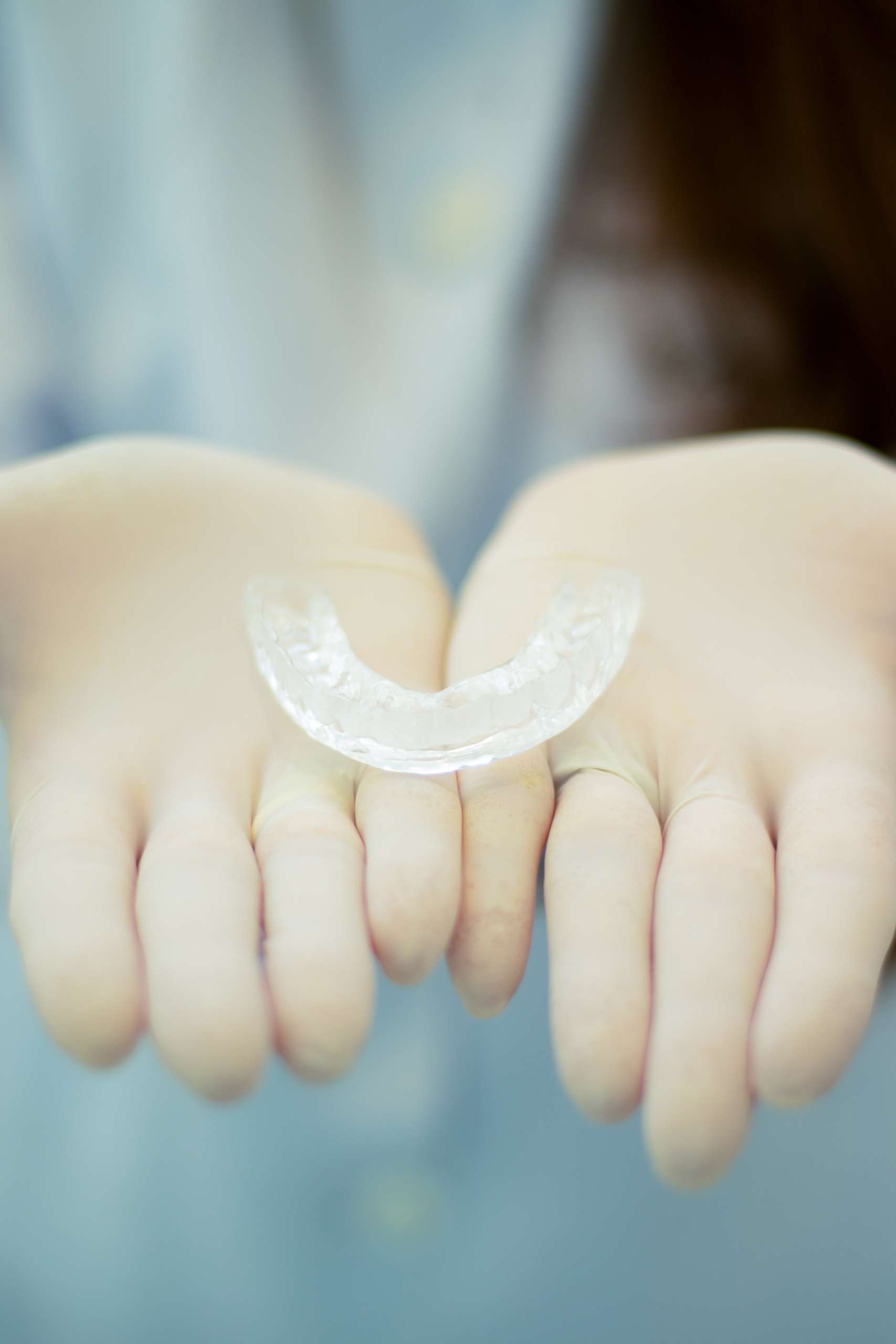
Cleaning
It is advised to regularly clean and floss your teeth while wearing braces to prevent food particles and plaque from building up so that germs can’t harm your teeth’s enamel.
Invisalign aligners shouldn’t be worn by people with terrible dental hygiene because they can lead to cavities and foul breath. Wearers should make sure to rinse their teeth thoroughly after eating or drinking. When using Invisalign, daily brushing time may double or triple because most individuals nibble throughout the day.
Duration of Treatment
The length of your treatment will vary on your unique circumstances, however Invisalign treatments are typically quicker for most orthodontic diagnoses. Instead of the individual tooth movement achieved with braces, Invisalign aligners apply an overall force to the teeth.
Depending on the individual instance, treatment with braces could take anywhere from one to three years, and treatment with Invisalign could last anywhere from six months to two years.
Price Range
The price of Invisalign will vary according to the number of trays needed. The quantity of trays depends on how much work needs to be done on your teeth. Costs for Invisalign might range from roughly $3,500 to $8,000.
Traditional braces are typically the more cost-effective choice if treatment cost is a factor for you. Braces often range in price from $2,500 to $8,000.
Braces or Invisalign may be partially or entirely covered by your dental insurance, depending on your plan. In order to determine the entire cost of either braces or Invisalign, you can speak with your insurance provider or verify your coverage.
Follow-Up and Post-Treatment
It is advised to schedule routine orthodontic appointments whether you are using Invisalign or braces. This often means once a month for braces and once every four to six weeks for Invisalign.
You will need to wear some sort of retainer once your braces treatment is finished ,often simply at night, to make sure the teeth stay in their proper alignment. Without it, you run the chance of your teeth shifting back to their original position.
Once your treatment is finished, Invisalign additionally demands that you only wear a tray at night.
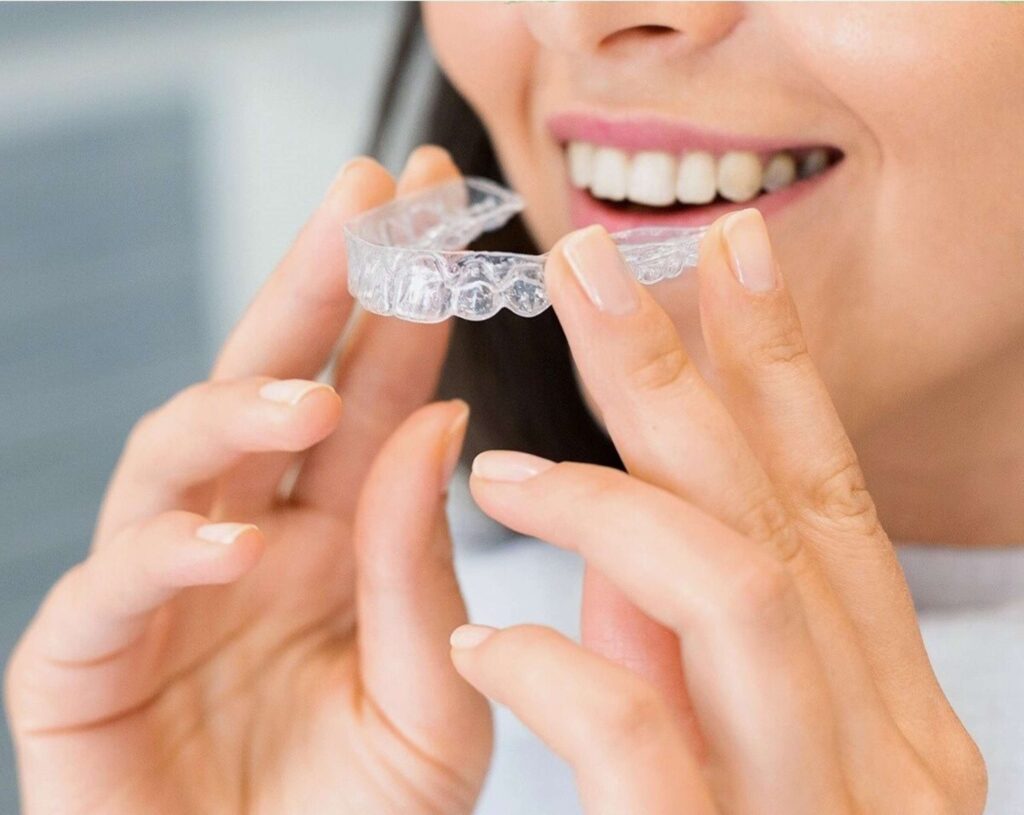
Conclusion
Braces and Invisalign both work well and are effective. Both fix biting problems in addition to straightening teeth. However, when comparing their efficacy, braces are better able to address more complicated dental issues, whereas Invisalign work well for repositioning teeth and enhancing their appearance when the tooth movements aren’t too complicated.
The choice between Invisalign and braces is ultimately a matter of personal preference, and that is the truth. As a result, you should consider the areas above to make the choice that is best for you or your child.
Change your smile right now and begin to feel more assured and confident. Regardless of your decision, practice proper, good oral hygiene and get in touch with your orthodontist if you have any queries.
YOUR DENTIST FOR Invisalign IN WALL TOWNSHIP
Are you interested in getting Invisalign near you in Wall Township?
Visit Dr. Avi Israeli of Sage Dental and Spa to bring you one step closer in achieving the perfect smile.
References:
https://en.wikipedia.org/wiki/Dental_braces
https://www.nhs.uk/conditions/braces-and-orthodontics/
https://www.webmd.com/oral-health/braces-and-retainers#1
https://www.healthline.com/health/how-do-braces-work
https://www.invisalign.com/how-invisalign-works
https://www.webmd.com/oral-health/invisible-orthodontic-aligners#1


